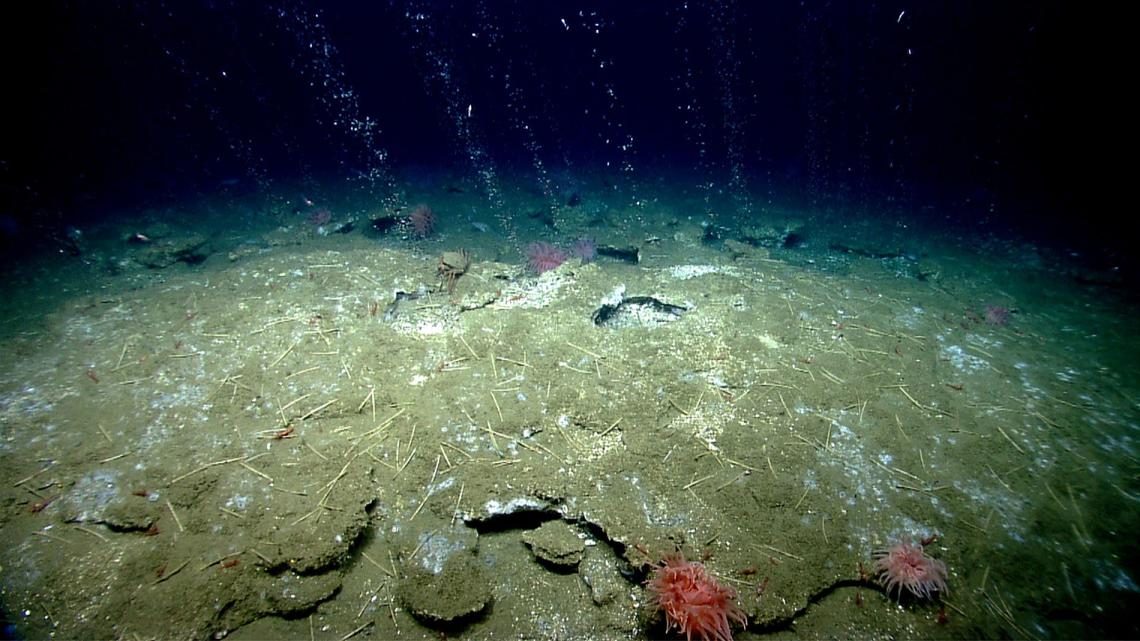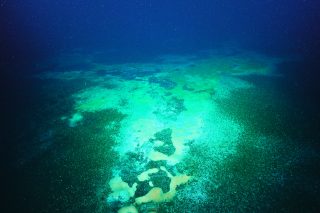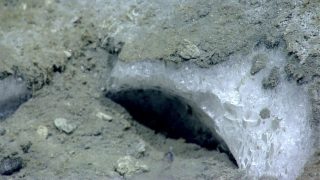The WaterWord: Methane Seep
Definition: Ever see a movie set at the bottom of the sea, and notice occasional streams of bubbles coming up from the seafloor? That’s what a methane seep is: A point where methane (a gas) escapes from the rock into the ocean above it. It is one of several types of ocean seeps where things like petroleum, carbon dioxide, or hydrogen sulfide leak into the waters surrounding them.
Etymology: Methane comes from the French word methylene, itself made up of the Greek word methy (wine) and hyle (wood). This is because methylene was detected in wood alcohol. Seep, meanwhile, comes from the Proto-Indo-European word seib, meaning “to pour out, trickle.”

Use/Significance in the Earth Science Community:
- Methane seeps transfer carbon, which is the primary element in methane, from below the seafloor to the ocean. Seeps therefore play a critical role in moving older carbon stored in the seafloor into the ocean, where the carbon can be consumed by organisms.
- Much of the methane that leaks out of the seafloor at methane seeps is produced below the seafloor when microbes consume buried organic carbon that has rained down through the water column. Because the continental margins have large amounts of organic carbon, processes that create methane in this way (methanogenesis) are commonly very active in sediments on these margins.
-

A microbial mat and clam bed lines on the ocean floor, roughly 2,000 feet down, at a different venting site. Methane seeps can be an important source of food for specialized underwater ecosystems. There are bacteria and other microscopic creatures that have evolved to eat the methane. They in turn serve as food for a variety of other animals that live near the seeps. So unlike ecosystems near the surface or on land, these methane-fueled communities have little reliance on the Sun to fuel photosynthesis.
U.S. Geological Survey/Schmidt Ocean Institute Use:
-

Gas hydrate at the seafloor on the U.S. Atlantic margin. The icy deposit formed as gas bubbles emitted from the seafloor transformed into methane hydrate beneath the overhanging rock.NOAA Office of Ocean Exploration and Research USGS and SOI are collaborating on a research cruise off the coast of Oregon and Washington that will study methane seeps in a region known as the continental margin. The cruise will look at gas hydrate, an important source of methane for some methane seeps, as well as other methane seeps to learn more about how they form, what kinds of ecosystems have developed around these seeps, and how much of the methane released is consumed within the ocean column before reaching the surface.
- Both USGS and SOI have studied methane seeps before. SOI has mapped methane seeps along the U.S. Pacific margin, while the USGS has studied them extensively, particularly on the U.S. Atlantic margin.
Next WaterWord: Methanogenesis

